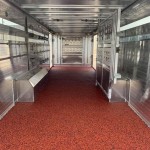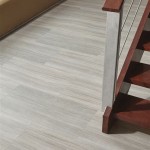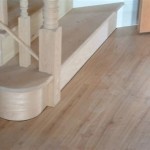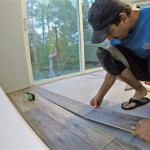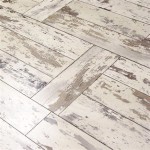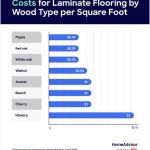Engineered Timber Flooring Cost Per Square Metre: A Comprehensive Guide
Engineered timber flooring has become a popular choice for homeowners and commercial property owners alike, offering a balance of aesthetic appeal, durability, and relative affordability compared to solid hardwood. Understanding the factors influencing the cost per square metre is crucial for budgeting and making an informed decision. This article provides a detailed examination of these factors, offering a comprehensive guide to estimating the expenses associated with installing engineered timber flooring.
The cost of engineered timber flooring per square metre can vary significantly depending on a multitude of elements. These include the quality of the timber veneer, the type of core board used, the thickness of the plank, the finish applied, the location of purchase, and the installation method. Additionally, regional differences in material costs and labour rates can also impact the final price. Therefore, a thorough assessment of these variables is essential for accurate budgeting.
Key Factors Influencing the Cost of Engineered Timber Flooring
Several key factors play a significant role in determining the final cost per square metre of engineered timber flooring. These factors can be broadly categorized into material costs, labour costs, and additional expenses associated with preparation and finishing.
Material Costs: The most influential factor is the material cost, which is driven by the quality of the timber veneer, the core board composition, and the plank dimensions. The veneer, typically a thin layer of real hardwood, dictates the aesthetic appearance and contributes significantly to the overall cost. Thicker veneers generally command higher prices due to their increased durability and resemblance to solid hardwood. The core board, the structural foundation of the plank, can be made from various materials such as plywood, high-density fibreboard (HDF), or softwood. HDF cores are commonly used for their stability and moisture resistance, while plywood offers excellent dimensional stability. The choice of core board affects both the price and the performance of the flooring.
Labour Costs: Installation costs represent a substantial portion of the total expense. These costs are influenced by the complexity of the installation, the condition of the subfloor, and the experience level of the installer. Installation methods vary, including glue-down, nail-down, and floating methods. Floating installations are generally less expensive as they require less labour and specialized tools. Glue-down installations, while more labour-intensive, provide a more stable and permanent bond with the subfloor. The preparation of the subfloor is also a critical factor. Uneven or damaged subfloors may require levelling or repairs, adding to the overall labour cost. Engaging a qualified and experienced installer is crucial to ensure a proper installation and prevent future problems.
Additional Expenses: Beyond the material and labour costs, several additional expenses should be considered. These include the cost of underlayment, which provides cushioning, insulation, and sound reduction. The type of underlayment required depends on the subfloor and the specific needs of the space. Edge trims, skirting boards, and transition strips are also necessary to finish the flooring properly. These elements are often made from matching timber or coordinating materials and contribute to the overall aesthetic appeal. Finally, the cost of removing and disposing of existing flooring should be factored in if applicable. This process can be time-consuming and may require professional assistance.
Breaking Down the Cost Components
To provide a clearer understanding of the cost breakdown, it is helpful to examine the individual components and their respective price ranges. These prices are indicative and may vary depending on the specific supplier and location.
Engineered Timber Flooring: The cost of the flooring itself typically ranges from $50 to $150 per square metre or more, depending on the quality of the veneer, the core board material, and the plank thickness. Lower-priced options often feature thinner veneers and less durable core boards, while premium options boast thicker veneers, more stable core boards, and enhanced finishes. European oak, known for its durability and aesthetic appeal, is often a more expensive option compared to other timber species.
Installation: Installation costs generally range from $30 to $70 per square metre, depending on the installation method and the complexity of the project. Floating installations are typically less expensive, while glue-down installations require more labour and specialized adhesives. Subfloor preparation can add significantly to the installation cost, particularly if levelling or repairs are necessary. Complex patterns or intricate designs will also increase the installation time and cost. Engaging a skilled installer is crucial to avoid costly mistakes and ensure a long-lasting and aesthetically pleasing result.
Underlayment: Underlayment costs typically range from $5 to $20 per square metre, depending on the material and thickness. Thicker underlayment provides better cushioning and sound insulation, but it also comes at a higher price. The type of underlayment required depends on the subfloor material and any specific requirements, such as moisture resistance or acoustic performance. It is important to choose the appropriate underlayment to ensure the longevity and performance of the engineered timber flooring.
Trims and Accessories: Trims, skirting boards, and transition strips can add an additional $10 to $30 per square metre, depending on the material and design. These elements are essential for creating a finished and polished look. Matching timber trims can be more expensive than generic options, but they provide a more seamless and cohesive aesthetic. The cost of these accessories should be factored into the overall budget.
Factors Affecting Material Quality and Price
The quality of engineered timber flooring is intrinsically linked to the materials used in its construction. The quality of the timber veneer, the core board, and the finish all contribute to the overall durability, appearance, and lifespan of the flooring. Understanding how these materials affect the price is essential for making an informed purchasing decision.
Timber Veneer: The thickness and quality of the timber veneer are primary drivers of cost. Thicker veneers, typically 3mm to 6mm, offer greater durability and can be sanded and refinished multiple times, extending the lifespan of the flooring. Thinner veneers, typically less than 3mm, are more susceptible to wear and tear and may not be suitable for high-traffic areas. The type of wood species also affects the price. Exotic or rare wood species command higher prices than more common species such as oak or maple. The grade of the veneer, which refers to the presence of knots and variations in grain pattern, also impacts the cost. Clear-grade veneers, which are free of knots and have a uniform grain pattern, are typically more expensive.
Core Board: The core board material plays a crucial role in the stability and moisture resistance of the flooring. High-density fibreboard (HDF) is a common choice due to its stability and resistance to moisture. Plywood cores also offer excellent dimensional stability and are less prone to warping. Softwood cores are less expensive but may not be as durable or resistant to moisture. The thickness of the core board also affects the price. Thicker core boards provide greater stability and load-bearing capacity, but they also increase the overall cost of the flooring.
Finish: The finish applied to the engineered timber flooring protects the veneer from wear and tear and enhances its aesthetic appearance. Common finishes include polyurethane, acrylic, and oil-based finishes. Polyurethane finishes are durable and resistant to scratches and stains, making them a popular choice for high-traffic areas. Oil-based finishes penetrate the wood and provide a natural look and feel, but they require more maintenance. The number of coats of finish applied also affects the durability and longevity of the flooring. High-quality finishes with multiple coats offer better protection and a longer lifespan.
Comparing Installation Methods and Their Costs
The installation method chosen for engineered timber flooring significantly impacts the overall cost and the longevity of the flooring. The three primary installation methods are glue-down, nail-down, and floating. Each method has its advantages and disadvantages, and the best choice depends on the specific subfloor conditions and the desired performance characteristics.
Glue-Down Installation: Glue-down installation involves adhering the engineered timber planks directly to the subfloor using a specialized adhesive. This method provides a very stable and permanent bond, minimizing movement and preventing squeaking. Glue-down installations are ideal for concrete subfloors and are often recommended for commercial applications where high traffic and heavy loads are expected. The cost of glue-down installation is typically higher than floating installations due to the increased labour and the cost of the adhesive. Subfloor preparation is also critical for glue-down installations, as any imperfections can affect the adhesion of the flooring.
Nail-Down Installation: Nail-down installation involves securing the engineered timber planks to a wooden subfloor using nails or staples. This method is suitable for plywood or OSB subfloors and provides a secure and stable installation. Nail-down installations are often preferred for their traditional feel and the solid sound they produce. The cost of nail-down installation is typically moderate, falling between glue-down and floating installations. Proper subfloor preparation is essential for nail-down installations to ensure that the nails or staples are securely anchored.
Floating Installation: Floating installation involves interlocking the engineered timber planks together without directly adhering them to the subfloor. The planks are installed over an underlayment, which provides cushioning, insulation, and sound reduction. Floating installations are generally the least expensive option as they require less labour and specialized tools. This method is suitable for a variety of subfloor types, including concrete, plywood, and existing flooring. Floating installations are relatively easy to install, making them a popular choice for DIY projects. However, floating floors may be more prone to movement and squeaking compared to glue-down or nail-down installations.

Average Hardwood Flooring S In 2024 Forbes Home

Hardwood Flooring Cost 2024 Per Square Foot Mk

Cost To Install Hardwood Floors The Home Depot

How Much Does Hardwood Flooring Cost 2024 Guide

The Complete Guide To Flooring Costs By Type Twenty Oak

How Much Does Hardwood Flooring Cost 2024 Guide

How Much Does It Cost To Install Engineered Hardwood Floors Floorings

Cost To Install Hardwood Flooring Floor Fixr

Basement Wood Flooring What You Should Know

How Much Does Hardwood Flooring Cost 2024 Guide
Related Posts


